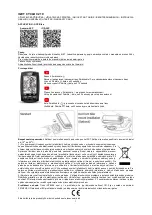
LTI TruSense S300 Series Integration Manual 3nd Edition
Page 75
Copyright © [2016] Laser Technology, Inc. All Rights Reserved. Unauthorized duplication, in whole or in part, is strictly prohibited.
Refractive Index:
also known as the Index of Refraction
,
a dimensionless number that describes
how fast light propagates through the material.
It is defined as where c is the speed of light in a
vacuum and v is the phase velocity of light in the medium.
Relative Accuracy:
also referred to
as Repeatability or Precision, it is the sensor’s ability to
measure to the same target, under the same conditions, over and over again, and produce the
same measurement reading.
Resolution:
the minimum distance between two adjacent features or objects or the minimum size
of a feature or object that can be detected. For a measurement, it is the smallest unit of resolve;
for example, 0.001 meter has 1 millimeter of resolution. Not to be confused with accuracy.
Sample rate:
the frequency with which the sensor updates its range output. This can be set as
low as one sample every 30 seconds and as high as 14 samples per second for the TruSense 300
series.
Span:
the minimum and maximum range of a sensor to a target in which a valid measurement
can be returned.
Stilling Well:
a circular pipe that is installed in a tank or connected to a canal, ditch, or stream by
an inlet pipe. A float in the well is sometimes coupled to a stream data recorder in order to obtain
water stage data that is not affected by surges or choppy water that may occur in the channel.
Target:
term used to refer to an object or point that is being measured or detected.
Wavelength:
one wavelength. equals the distance between two successive wave crests or
troughs
; e.g., 905 nanometers define
s’
this distance as 0.000000905 meters between two adjacent
points on the same light wave.











































